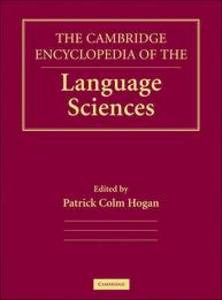Mood
Aikhenvald, Alexandra Y. (2011) Mood. In: Hogan, Patrick Colm , (ed.) The Cambridge Encyclopedia of the Language Sciences. Cambridge University Press, USA, pp. 512-513.
![[img]](https://researchonline.jcu.edu.au/15761/6.hassmallThumbnailVersion/15761_Aikhenvald_2011_Book_cover.jpg)
|
Image (JPEG) (Book Cover)
- Cover Image
Download (7kB) |
|
|
PDF (Published Version)
- Published Version
Restricted to Repository staff only |
Abstract
[Extract] Mood forms part of the nonspatial setting of an event, alongside MODALITY, reality status, TENSE, ASPECT, and EVlDENTIALITY. Mood refers to a type of SPEECH-ACT, with three basic choices. Many languages have a special verb form marking commands, which is known as imperative mood. In Latin, the second person imperative dic means "(you) say!" and is different from the statement dicis, "you say." Declarative mood (sometimes called indicative) is used in statements. Many more categories tend to be expressed in declarative clauses than in either interrogative or imperative. Interrogative mood occurs in questions - as in West Greenlandic where every question is marked with a special suffix on verbs (Fortescue 1984, 4-9, 287-98).
| Item ID: | 15761 |
|---|---|
| Item Type: | Book Chapter (Reference) |
| ISBN: | 978-0-521-86689-7 |
| Date Deposited: | 09 Jun 2011 06:28 |
| FoR Codes: | 20 LANGUAGE, COMMUNICATION AND CULTURE > 2004 Linguistics > 200407 Lexicography @ 100% |
| SEO Codes: | 97 EXPANDING KNOWLEDGE > 970120 Expanding Knowledge in Language, Communication and Culture @ 100% |
| Downloads: |
Total: 136 Last 12 Months: 2 |
| More Statistics |



